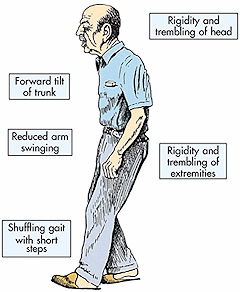 Scientific American Mind - Vol. 25
Scientific American Mind - Vol. 25
Issue 3 May 1, 2014
By Lydia Denworth
(Partial Article)
Stem cells can divide indefinitely and give rise to specialized cells, which can be used to repair brain damage from degenerative disorders such as Parkinson’s.
Ethical concerns, limited access to stem cells and mixed results from clinical trials have stifled progress in advancing stem cell therapies; however, novel techniques for producing and transplanting these cells have recently inspired optimism.
v Researchers are aiming to use stem cells to treat more than a dozen diseases, including diabetes, spinal cord injury and several forms of cancer.
v Neurosurgeon Ivar Mendez of the University of Saskatchewan often shows a video clip to demonstrate his work treating Parkinson’s disease. It features a middle-aged man with this caption: “Off medications.” The man’s face has the dull stare typical of Parkinson’s. Asked to lift each hand and open and close his fingers, he barely manages. He tries but fails to get up from a chair without using his hands. When he walks, it is with the slow, shuffling gait that is another hallmark of Parkinson’s, a progressive neurological disorder that afflicts an estimated one million Americans, most of them older than 60.
Then the video jumps forward in time. The same man appears, still off medications. It is now eight years since Mendez transplanted dopamine cells from a fetus into the patient’s brain. These neurons, which live in a midbrain region called the substantia nigra and secrete the neurotransmitter dopamine to initiate movement, are the ones that die off in Parkinson’s. The man has aged, but his energy and demeanor are characteristic of a much younger man. Asked to do the same tasks, he smoothly raises his arms high and flicks his fingers open and shut rapidly. Arms crossed on his chest, he rises from a chair with apparent ease. Then he struts down the hall.
In the 25 years since the first few patients received transplants as part of a clinical trial at University Hospital in Lund, Sweden, hopes of using cell-based therapy as a treatment for Parkinson’s have repeatedly risen and then been dashed. Stem cells are a biological raw material of enormous potential because they can generate new cells through the ability to divide indefinitely and to give rise to specialized cells. These cells can then be used to repair brain damage from degenerative disorders such as Parkinson’s. Stem cells, however, have been hard to come by. So far the cells transplanted in humans have been derived from aborted fetal tissue, although scientists have also transplanted stem cells derived from human embryos into animals. Thorny political and ethical issues limit access to both fetal cells and embryonic stem cells, and fetal cells are in particularly short supply. Two large clinical trials using fetal tissue, published in 2001 and 2003, were considered failures because of their widely variable results; not enough patients improved by the study end points, and some developed serious side effects. Many scientists gave up on cell therapy.
But a handful of laboratories persevered. Now new evidence showing that transplantation can work well, as in Mendez’s patient, and possible new sources of cells free of ethical concerns have sparked a fresh optimism. This year neurologist Roger A. Barker of the University of Cambridge will lead the first large clinical trial of cell therapy for Parkinson’s in a decade. “We’ve broken through the old barriers,” says cell biologist Ole Isacson of Harvard University.
The momentum most likely will propel cell therapies for other disorders as well. Researchers are trying to apply the technique to more than a dozen diseases, including diabetes, spinal cord injury and several forms of cancer [see “Stem Cell Repair Shop,” on page 64]. In addition to Parkinson’s, the most significant progress has been made with retinal diseases. Clinical trials are under way to use retinal pigment epithelial cells for treatment of macular degeneration. According to the California Institute for Regenerative Medicine, theoretically there is no disease to which stem cell therapy could not be applied. In each case, the requirements depend on the difficulties inherent in generating the specific type of cell scientists hope to replace.



